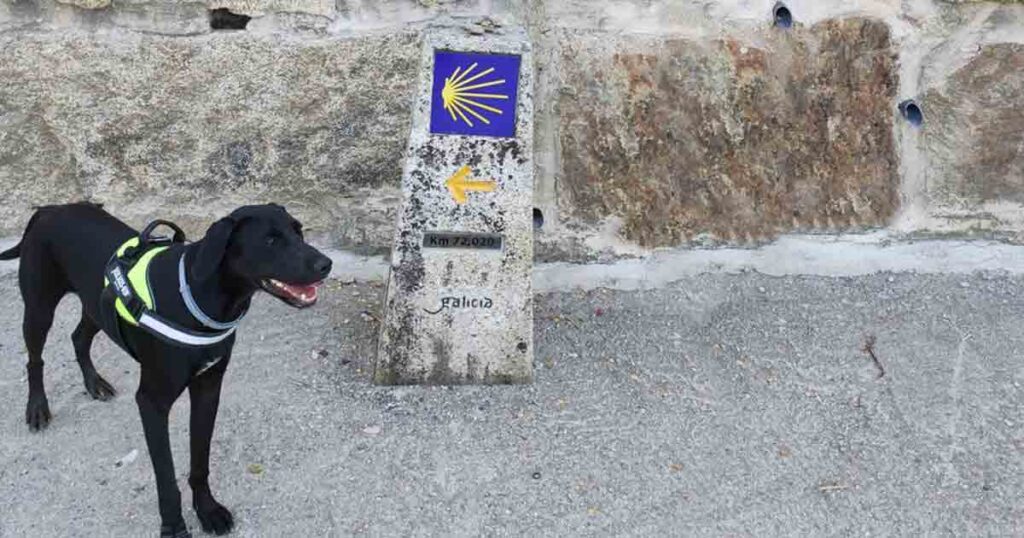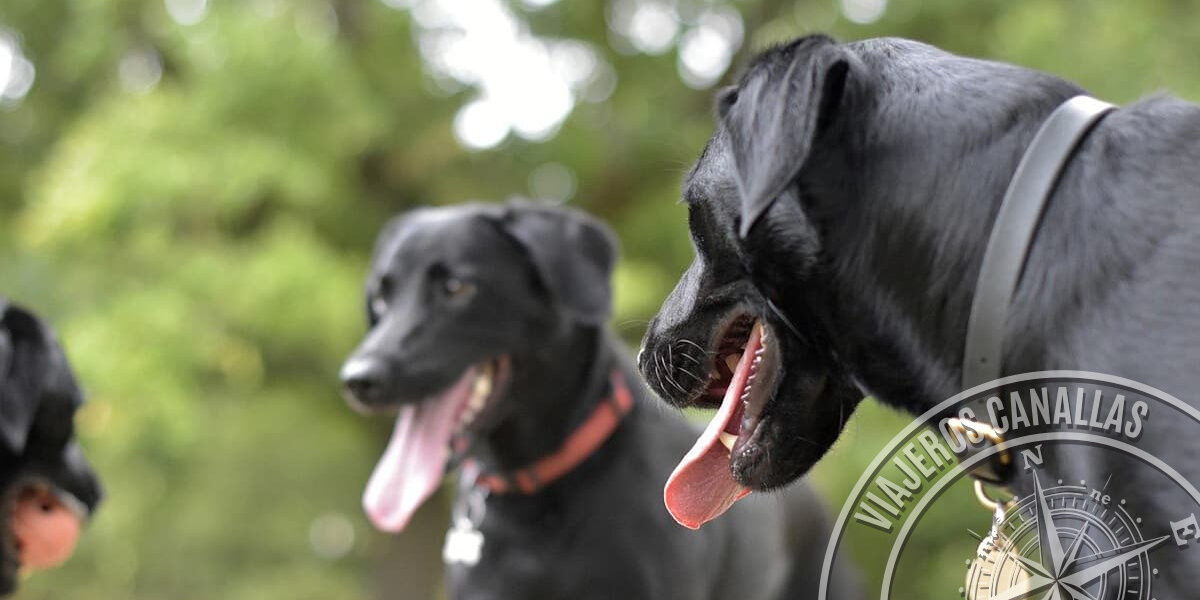We tell you how to do the Way of Saint James with pets
The Camino de Santiago is a unique experience that combines adventure, spirituality and nature. Doing it in the company of your pet can add a special dimension to the journey. However, travelling with an animal requires planning and certain precautions. Here are some tips and suggestions from routes to do the Camino de Santiago with your faithful four-legged friend.

Preparations before starting
Vet check: Before you start your trip, make sure your pet is in good physical condition. Vaccinations, deworming and a general check-up are essential.
Suitable equipment: Wear a comfortable harness, a sturdy leash and a collar with identification. It is also useful to have a light backpack with water, food and a basic first aid kit for emergencies.
Training: Both you and your pet should be used to walking long distances. Take training walks to prepare their pads and condition them for the effort.
Accommodation planning: Not all hostels are pet-friendly. Do your research and book in advance for those that are pet-friendly. There are several guides and mobile apps that can help you locate these places.
Canine credential: since 2018 there is a canine credential, which is the passport for your pet in which stamps are placed that accredit their passage through the different stages of the journey. It costs 3 euros and the money raised goes to help abandoned animals along the way. During the last stage of the Camino, you will have to contact the Asociación Protectora de Animais do Camiño, to obtain the canine Compostela that will certify that your pet has completed the Camino.
Advice on the Camino
Hydration and food: Make sure your pet has constant access to fresh water and carry enough food. Making regular stops to rest and refuel is crucial.
Sun and weather protection: Avoid the hottest part of the day and seek shade whenever possible. On very sunny days, use pet-specific sunscreens on sensitive areas such as the nose.
Pad care: Long walks can be hard on your pet's paws. Check their pads regularly and use specific products to protect them and avoid injury.
Respect nature and other pilgrims: Keep your pet under control at all times, respect the rules of the road and pick up their waste to keep the environment clean.
Pet-friendly routes
Not all routes of the Camino de Santiago are equally suitable for animals. Below, we suggest some more pet-friendly options:
French Way: It is the most popular and has more infrastructure and services for pilgrims and their pets. However, some sections can be very busy, so it is advisable to avoid the high season.
Camino del Norte: It offers spectacular scenery and is less busy than the French Way. Many parts of the route run close to the coast, which can be refreshing for your pet.
Camino Primitivo: Although it is more physically demanding, the beauty of its landscapes and its tranquillity make it an interesting option. Make sure you are well prepared for the toughest stages.
Portuguese Way: From Tui or from Baiona to Santiago, it is a shorter and generally less challenging route, with good availability of pet-friendly accommodation.

Experiences of other pilgrims
Many pilgrims have completed the Camino de Santiago with their pets and share their experiences on blogs and social networks. Reading their stories can be inspiring and offer additional advice.
Conclusions
In short, doing the Camino de Santiago with your pet is a rewarding adventure that strengthens the bond with your pet and allows you to enjoy a unique shared experience. With proper preparation and respect for the needs of your travel companion, you can make this journey an unforgettable memory.
Bon Camino, to you and your faithful friend!
